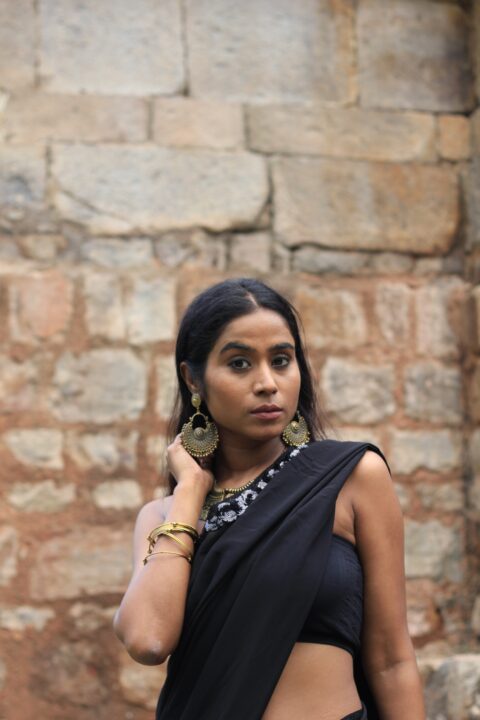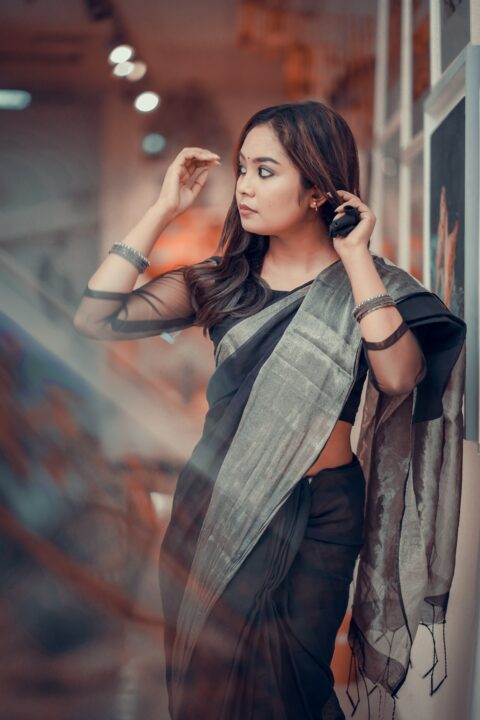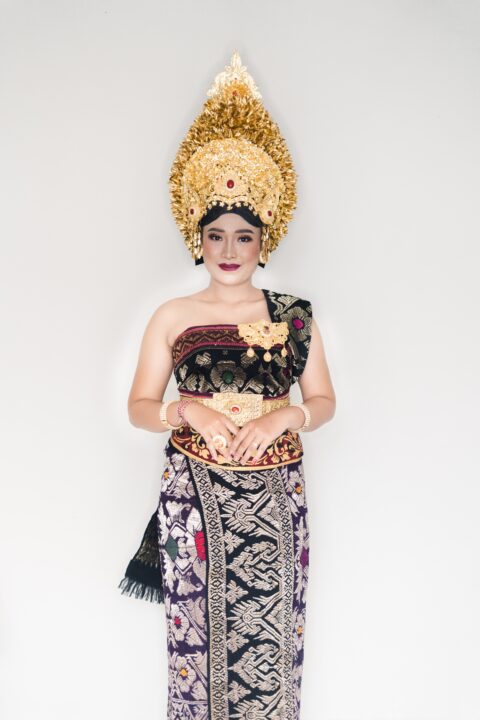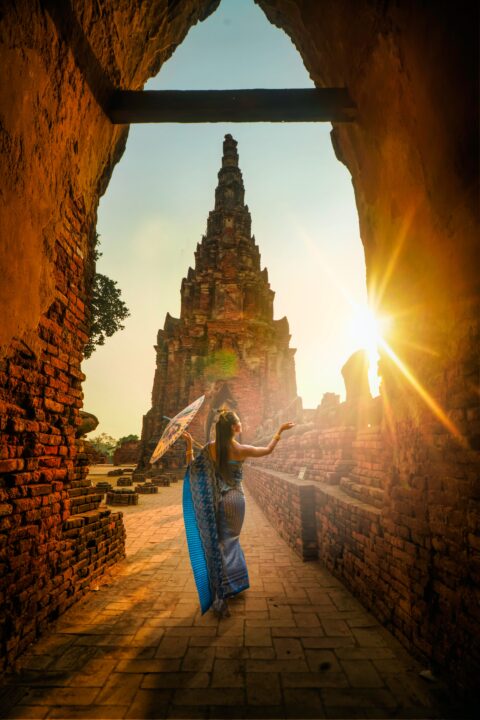Thailand traditional clothing was greatly influenced by India. Loincloths, gold necklaces, and metal belts were among the styles that influenced fashion in Thailand.
Fashion in Thailand has changed over the years, yet you will still see traditional Thai dresses at formal occasions or festival celebrations. Through the craft of weaving, ethnic groups across Thailand use their weaving techniques to produce beautiful dresses with different colors, patterns, and designs. A country goes through different stages in the course of its history. It undergoes political, economic and social changes. What doesn’t come to mind is the gradual change that occurs in the attire of the country.
Traditional Thai clothing is best known as “Chut Thai” which literally means that it can be worn by men, women, and children all over the country. Chut Thai for women usually consists of a pha Chung or a pha nung, a blouse, and a pha biang, while the men’s outfit is known as a Raj pattern costume, which includes a pha Chung hang or pants, a shirt with optional knee-length white socks and a pha biang.
Where to Find Thailand Traditional Clothing
Finding Thai garments throughout Thailand is super easy, but some of our favorite places include weekend markets like Chatuchak and the Sunday walking street in Phuket and Chiang Mai. But if you are only in Bangkok and looking for something more extensive, varied, or refined, the best place to search for Thai garments is the Old Siam Shopping Plaza.
It’s in the old part of Bangkok, and there are vendors beyond this shopping plaza who sell material and pre-made outfits. It’s a treasure trove for traditional Thai outfits and beyond. Across the southern region of Thailand, men and women wear brilliantly colored batik-patterned sarongs. Women pair their sarongs with loosely fitted lace blouses, worn outside of the sarong and an open front.
The Malaysian ‘yaya’ style influences this popular look. Women will also wear a shawl that covers both the head and shoulders in compliance with Muslim beliefs. They would have to carry elements of traditional Thai garments and be made of Thai textiles, including silk.
An Overview of Thai Culture
Thailand is a country that has managed to retain its cultural integrity in spite of being a significant tourist destination. You can find everything from pristine beaches to dense forests, from ancient monasteries to coral reefs, from Buddhist monks to floating markets and fragrant and plentiful food to treat your taste buds.
Moreover, Thai people are among the most hospitable people in the world, which only adds to the overall charm of the place. Tribal groups Thai-Lue, Thai Kern, and Thai Yai greatly continue to influence the fashion of Northern Thailand. Styles include indigo-dyed blouses fastened on the side and ankle-length tube skirts.
The tube skirts are designed more elegantly for formal occasions, with colorful weaving down the middle and decorated hems. The most popular style among women is the ankle-length tube skirt. However, older generations of women wear the traditional ‘jong krabane,’ a style of skirt made of hand-woven cotton gathered, rolled, and threaded between the legs.
Top 10 Traditional Thailand Clothing
Thai dress or Chut Thai has many styles to choose from; each style is used for different occasions and the ensembles can be layered with rich symbolism. The language of style requires no verbal communication; instead, it speaks through the textures, colors and designs.
The traditional dress of Thailand, Chut Thai, has come to have many variations over the centuries. Its literal meaning is “Thai Outfit”. Typically bright, delicate and modest, different ethnic groups in Thailand use their fabrics and intricate patterns. Many traditional dresses are worn during various festivals and wedding ceremonies. Let’s take a walk through the Thai cultural list of traditional dresses in Thailand
1. Chong Kben
Men and women alike wear Chong Kben, a lower-body silk wrap-around garment adopted from Cambodia. This pant-like garment resembles loose breeches and is tucked between the legs. Chong Kben was worn with a bare chest for men and bare feet, an acceptable formal dress code.
2. Sinh
-

agung pandit wiguna, pexels, 18269935.jpg
Thai women are commonly seen wearing a full-length ‘pha sinh, a tubular skirt wrapped around the waist generally made of Thai silk. Pha sinhs come in many colors with contrasted bands around the hem, paired with long-sleeved silk blouses. The fabric for the sinh is made with a traditional weaving technique called (yok) for a thicker fabric. This special technique creates an additional thickness without adding extra threads to the fabric. In some cases, craftsmen will add fine threads of gold or silver to the weaving for an elegant finish.
3. Sabai

A sabai is an elegant shawl-like garment covering just one shoulder that wraps around the upper body and trails to the ground. The garment can traditionally be worn on its own; however, today, it is customary to wear an item of clothing underneath. It is usually worn by women. The Sabai is about a foot wide and draped diagonally around the chest by covering one shoulder, whose end drops behind the back. Sabai could be worn around the naked chest or on top of another cloth.
4. Ruean Ton
The Ruean Ton is often worn during non-official functions, such as religious ceremonies. The outfit consists of a tube-like skirt made from silk with a striped or plain design and embroidery at the hem.
The skirt is paired with a collarless blouse with a row of buttons on the front and elbow-length sleeves. The Ruean Ton is a two-piece dress; therefore, the blouse and skirt are separate. The blouse has five buttons down the center and three-quarter sleeves. The blouse may have the same color as the Sinh or its patterns or contrast entirely.
Named after the teak houses of Dusit Palace in Bangkok that were built as a more informal reception for the King’s subjects, this simple and comfortable ensemble is considered the casual chut thai. Today, the Ruean Ton is often worn for religious ceremonies and holidays, going to temples and as a uniform in the hospitality industry.
5. Chakkri
-

oleksandr p, pexels, 2070485.jpg
Chakkri is one of the most famous and elegant traditional dresses from Thailand, Chakkri boasts a grandeur appropriate for any formal occasion. The outfit includes a long tube skirt with two front pleats and a Sabai.
A Sabai is a top made from silk that wraps around the shoulders and trails to the ground on one side. It is considered to be elegant and formal attire. It consists of a long tube style skirt, a top made from silk and a sabai. Women usually wear gold as an accessory.
The chakri is what most people think of when they refer to a traditional Thai dress made of gold or silver metal-thread brocade, the outfit consists of a bodice wrapped in a single shawl or sabai draped across the chest over the non-dominant shoulder, exposing the other shoulder.
The sinh has the signature front pleat, and the ensemble is paired with an ornate belt and necklace. Considered an evening dress, the chakri is also worn to royal ceremonies and by brides to be for daytime engagement or wedding ceremonies.
6. Siwalai
Siwalai is seen at events such as royal ceremonies or functions. The Thai dress is a one-piece gown made from two garments of clothing sewn together: a long tube skirt with two front pleats and a blouse with buttons on the front and elbow-length sleeves sewn together.
The formal look is complete with a sabai draped over the shoulder. The siwalai is also commonly seen at royal ceremonies or at very formal daytime and evening events.
7. Amarin
This ensemble is suitable for evening functions, receptions, the theatre, royal ceremonies and processions, association gatherings and other occasions that call for full time or half time dress attire. The silk garment may also incorporate gold thread, “Silk Brocade” especially in the flower embroidery. While there’s no belt, the Amarin outfit is usually adorned with insignia, depending on the occasion.
The Amarin uses more luxurious fabrics and is paired with an extravagant set of jewelry. The long-sleeved blouse is usually broad and has a round neck. Known for its textiles and accessories, this traditional dress in Thailand does not require a belt to be worn with it. It can be worn during royal events with the necessary royal ornaments.
8. Suea Phraratchathan
The traditional dress of Thailand is called Suea Phraratchathan “royalty-bestowed “shirt” It is a button-up shirt with an extended collar, long sleeves and a sash for formal occasions. The Pakama, a large rectangular piece of fabric, is often worn by men by wrapping around the waist. The shirt worn by men is very similar to the Raj pattern jacket, which itself takes inspiration from the Nehru jacket.
The shirt comes in two varieties: short sleeves and long sleeves with a sash which range from the least formal to the most formal, respectively. A suea phraratchathan is usually paired with western-style suit trousers.
9. Boromphiman
This evening attire is fit to be worn to formal and semi-formal functions. Similar to Siwalai, it too has a skirt and a blouse sewn together. It is made from fine fabric.
The shirt traditionally has a round neck and long sleeves and is generally tucked beneath the sarong. The fabric is brocaded, which gives it an elegant and luxurious look. This traditional dress in Thailand is beautiful and can be seen worn by women at semi-formal functions in Thailand.
The blouse does not have any buttons and can either open at the front or back. Furthermore, the blouse is sewn into the sinh as a single piece, and the sarong is pleated in front in a fashion known as “Jeep Wai chai pok”. Accessories also include an ornamental belt.
The boromphiman is worn for evening functions and other occasions that call for full- or half-dress attire, such as gala dinners, royal and official receptions, and by royal brides
10. Chitlada
Chitlada consists of a long Sinh (sarong), worn with a blouse with five golden buttons at the front. The brocade embroidery at the hem of the sarong adds to the beauty of the dress. This is one of the traditional dresses of Thailand that is worn by women for more formal or official events. The blouse has a short, standing collar and the entire ensemble may be covered in flower embroidery.
Depending on the fabrics used, this outfit may be worn during daytime ceremonies, royal ceremonies, and official visits with foreign dignitaries that do not require displaying insignia. Black versions of the Chitlada are worn at funerals or during periods of mourning.





